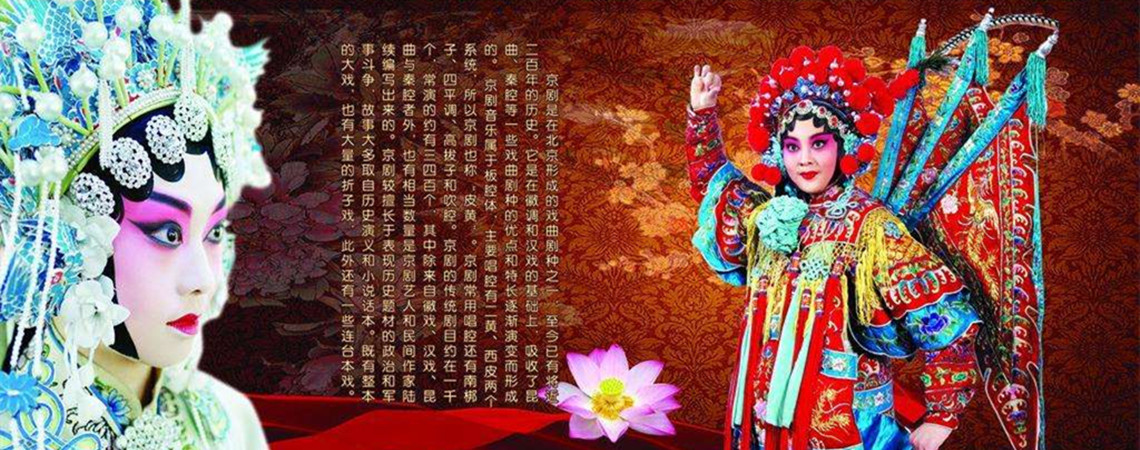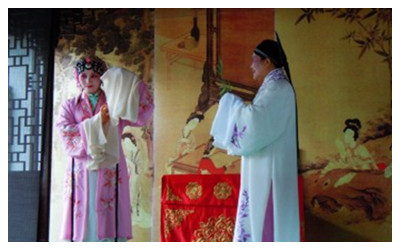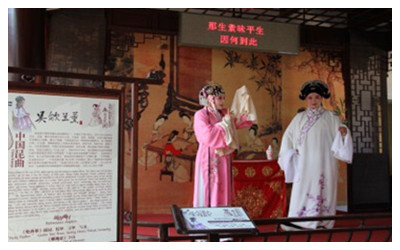Skype: neodalle-travel
Tel: +86 135 7447 2266
E-mail: sales@zhangjiajieholiday.com

History of Kun Opera
 Kun Opera, also called "Kunshanqiang" or "Kunqu", originated in the Kunshan region of Jiangsu. Kun Opera boasts a history of 600 years, which is over four hundred years earlier than the birth of Beijing Opera.During the reign of Emperor Jiajing, Ming Dynasty (1368-1644), Wei Liangfu, a famous musician, combined the essences of Haiyan and Yiyang styles and created the well-known "Shuimoqing", contributing to the development of Kun Opera.
Kun Opera, also called "Kunshanqiang" or "Kunqu", originated in the Kunshan region of Jiangsu. Kun Opera boasts a history of 600 years, which is over four hundred years earlier than the birth of Beijing Opera.During the reign of Emperor Jiajing, Ming Dynasty (1368-1644), Wei Liangfu, a famous musician, combined the essences of Haiyan and Yiyang styles and created the well-known "Shuimoqing", contributing to the development of Kun Opera.
Kunqu singing techniques are said to have been developed during the Ming Dynasty by Wei Liangfu in the port of Taicang, but linked to the songs of nearby Kunshan.Kunqu performance is closely inter-related with the performance of many other styles of Chinese musical theatre, including Jingju (Peking Opera), which contains much Kunqu repertoire. The emergence of chuanqi plays, commonly sung to Kunqu, is said to have ushered in a "second Golden Era of Chinese drama". Kunqu troupes experienced a commercial decline in the late 19th century.
In the early 20th century, Kunqu was re-established by philanthropists as a theatrical genre that was subsequently subsidised by the Communist state. Like all traditional forms, Kunqu suffered setbacks both during the Cultural Revolution and again under the influx of Western culture during the Reform and Opening Up policies, only to experience an even greater revival in the new millennium.
Today, Kunqu is performed professionally in seven Mainland Chinese major cities: Beijing (Northern Kunqu Theatre), Shanghai (Shanghai Kunqu Theatre), Suzhou (Suzhou Kunqu Theatre), Nanjing (Jiangsu Province Kunqu Theatre),Chenzhou (Hunan Kunqu Theatre), Yongjia County/Wenzhou (Yongjia Kunqu Theatre) and Hangzhou (Zhejiang Province Kunqu Theatre), as well as in Taipei. Non-professional opera societies are active in many other cities in China and abroad, and opera companies occasionally tour.
Features of Kun Opera
 Kun Opera has a complete system of acting as well as its own distinctive tunes. Its wide-ranging repertoire has many delicate and elegant tunes. The orchestra consists of traditional instruments including the dizi, a horizontal bamboo flute which plays the lead part; xiao, a vertical bamboo flute; sheng, a mouth organ and pipa, a plucked string instrument with a fretted finger board. With unique system and style in performance, Kunqu Opera has the most outstanding properties including that its lyricism is strong; its actions are exquisite; and its singing and dancing are artfully and harmoniously combined by performers.
Kun Opera has a complete system of acting as well as its own distinctive tunes. Its wide-ranging repertoire has many delicate and elegant tunes. The orchestra consists of traditional instruments including the dizi, a horizontal bamboo flute which plays the lead part; xiao, a vertical bamboo flute; sheng, a mouth organ and pipa, a plucked string instrument with a fretted finger board. With unique system and style in performance, Kunqu Opera has the most outstanding properties including that its lyricism is strong; its actions are exquisite; and its singing and dancing are artfully and harmoniously combined by performers.
The elegance of Kunqu Opera finds expression in its absorption of the essences of the Chinese classic art. In most circumstances, the libretto and spoken parts of Kunqu Opera follow the style of Song lyrics (songci) and Yuan melody (yuanqu) directly. Even its language and words are artful "poems", enjoying very high value of literal art.
The aria of Kunqu Opera also absorbs the acoustic essence of the Chinese classic poems. The acoustic charm in ancient China aimed at adjusting the rhythm and tones of Chinese characters, so that the articles would be easy for reciting and could be recited fluently like a beautiful song.
The art of Kunqu Opera pays heavy attention to the stage performance of actors and actress. The performers of Kunqu Opera are all necessary to receive strict trainings on the gesture performance. Only through gestures, expressions, and dancing motions can these performers show all works of all themes of Kunqu Opera well.
Generally speaking, a traditional Kunqu Opera troupe only needs 18 actors and actresses in total. Only in a few very big opera troupes have twenty seven performers. Normally a troupe that has ten performers that contain all the main types of characters could give performances and other characters in need could be replaced by those whose roles are the similar types. The ten performers are called 'Ten Main Pillars' of the troupe, and they are Jing, Guansheng, Jisheng, Laosheng, Mo, Zhengdan, Wudan, Liudan, Fu, and Chou, and the quality of the performance mainly depend on the acting of four roles, including Jing, Laosheng, Guansheng, and Zhengdan.
Famous Plays of Kun Opera
There are many plays that continue to be famous today, including The Peony Pavilion and The Peach Blossom Fan, which were originally written for the Kunqu stage. In addition, many classical Chinese novels and stories, such as Romance of the Three Kingdoms, Water Margin and Journey to the West were adapted very early into dramatic pieces.Kunqu Opera has a wide scope of subject matter, mainly including love, marriage, society, politics, history, and moral education. To know more about Kun Opera, you can look through the following synopses of famous plays of Kun Opera:
Escorting Jingniang Home (Qianli Song Jingniang): Zhao Kuangyin(927-976 AD) is a brave warrior who becomes the Song emperor. Once he rescues a girl named Jingniang who has been kidnapped by a group of bandits. He makes the girl his sworn sister while escorting her home to avoid the rumor that he may have had an affair with the girl. The girl's father wants to marry off his daughter to Zhao, who declines the marriage, insisting that they are sworn brother and sister. The girl commits suicide, and her soul escorts Zhao to his destination.
Fifteen Strings of Coins (Shiwu Guan): The opera is set in the Ming Dynasty (1368-1644). Lou Ashu, a rascal from Wuxi County, kills the butcher Hulu and takes his 15 strings of coins. Without investigation, the county magistrate Guo Yuzhi concludes that Xiong Youlan and Su Shujuan are the murderers. Before they are executed, the Suzhou governor, Kuang Zhong, decides that Xiong and Su may be innocent. Kuang goes to Wuxi to investigate and arrests the real murderer. Xiong and Su are released. Fifteen Strings of Bronze Coin Cash is a representative detective story in the repertoire of Kunqu Opera with lively enthralling plots, the drama appeals greatly to the ordinary audience in China.
Love at First Sight (Qiang Tou Ma Shang): During the Tang Dynasty, Pei Shaojun, a minister's son, and Li Qianjun, a minister's daughter, fall in love at first sight. Li's father wants her to marry the prime minister's son, so Pei and Li elope. Later, when Pei passes the imperial examination and wins the title "Number One Scholar," their parents accept their marriage.
 Ask Questions ?
Ask Questions ?